
Why Do Cats Purr? Unraveling the Mystery Behind the Feline Purr
Introduction
Picture this: You’re lounging on the couch, a cozy blanket draped over your legs. Suddenly, your feline companion hops onto your lap, curling up like a fluffy croissant. As you stroke its soft fur, a gentle rumble fills the air—your cat is purring! It’s a delightful sound, often linked to moments of tranquility and affection. Many believe that a cat’s purr is a surefire sign of happiness, but hold on to your catnip, folks—things are not always so simple.
While a purring kitty might seem like a furry ball of joy, the truth is that cats purr for a variety of reasons, some of which are quite surprising. Understanding why cats purr not only satisfies our curiosity but also enhances the bond between you and your whiskered friend. After all, knowing what those vibrations mean can lead to a deeper connection and better care for your pet.
Let’s embark on an exploration of the multifaceted reasons behind this enchanting sound. From signaling contentment to self-soothing during stressful moments, the reasons behind a cat’s purr are as diverse as their personalities. So, grab a cup of tea, settle in, and prepare to unravel the mystery of the feline purr!

Summary of Key Points
Cats purr for a multitude of reasons, and it can be quite the mixed bag. While we often associate purring with contentment, it can also indicate hunger, stress relief, or even a healing mechanism. When a cat purrs, it employs the muscles in its larynx and diaphragm, producing that smooth sound we adore. The frequency of purring, ranging between 25 to 150 Hz, is believed to have healing properties, promoting bone growth and tissue repair.
Speaking of keeping your kitty happy and healthy, why not treat them to some fun? A delightful Catnip Toy for Cats can provide hours of entertainment and stimulate their natural hunting instincts! Trust me, your cat will thank you with a symphony of purrs!
Evolutionarily speaking, purring serves as a vital communication tool among felines. Kittens begin purring shortly after birth, using it to signal their mother for attention or food. This behavior carries into adulthood, where cats may purr as a way to solicit food or companionship from their human pals.
But not all purring is a sign of happiness. Context is crucial! A cat’s body language can provide insight into its emotional state. For instance, if a cat is purring while its ears are flattened, it could be experiencing stress or discomfort. Likewise, the soothing vibrations of a cat’s purr may offer comfort not just to the cat but to humans as well, reducing our stress levels and creating a calming atmosphere.
In essence, deciphering a cat’s purr is a blend of observation and intuition. By paying attention to your cat’s body language and the context of its purring, you can better understand its needs and feelings. So, keep those ears perked and those eyes wide—your feline friend has a lot to say!

Understanding Cat Purring
The Mechanics of Purring
Ah, the soothing melody of a cat’s purr! But what’s really happening behind the scenes? Purring is a fascinating vocalization that originates from the laryngeal muscles. When a cat purrs, these muscles rapidly contract and relax. This rhythmic movement allows air to pass through the glottis—the space between the vocal cords—creating that delightful sound we associate with our furry friends.
Now, let’s get technical for a moment. The frequency range of cat purring typically falls between 25 to 150 Hz. This range isn’t just for show; it actually plays a significant role in healing. Research suggests that these low-frequency vibrations can promote bone and tissue regeneration. Imagine your cat lounging around, purring contentedly, while its body is actually getting a little boost to heal itself! It’s like a spa day for their insides.
In addition to healing properties, the act of purring may also serve as a self-soothing mechanism. Cats often purr in stressful situations, such as during a vet visit or after an injury. This dual purpose of purring—communication and healing—highlights the remarkable adaptability of our feline companions.
If you’re looking to keep your cat pampered, consider getting them a comfy Cat Bed with Removable Cover. It’s perfect for those cozy purring moments!

Evolutionary Significance
Purring isn’t just a quirky trait; it has significant evolutionary implications too! The ability to purr likely developed in felids as a means of communication and survival. From a young age, kittens learn to purr to signal their mothers. This early communication helps them attract attention for feeding and reassurance.
As cats grow, they retain this purring behavior into adulthood. Adult cats often use purring to communicate with humans and other animals. Research indicates that purring can serve multiple purposes—ranging from expressing contentment to signaling need or discomfort.
For instance, a hungry cat may purr while rubbing against your leg, subtly suggesting it’s time for dinner. In another instance, a cat may purr in a less pleasant context, like during a stressful encounter. This versatility in communication showcases how purring has become an essential tool for cats throughout their evolution.
Speaking of dinner, an Automatic Cat Feeder can save you from those “feed me now” purrs! It ensures your cat always has access to food, whether you’re home or away.
In conclusion, understanding the mechanics and evolutionary significance of cat purring enriches our appreciation for these enchanting creatures. It’s not merely a sound of happiness; it’s a complex form of communication with roots that run deep into their history. So, the next time your cat curls up and starts to purr, remember—there’s a lot more going on than meets the ear!
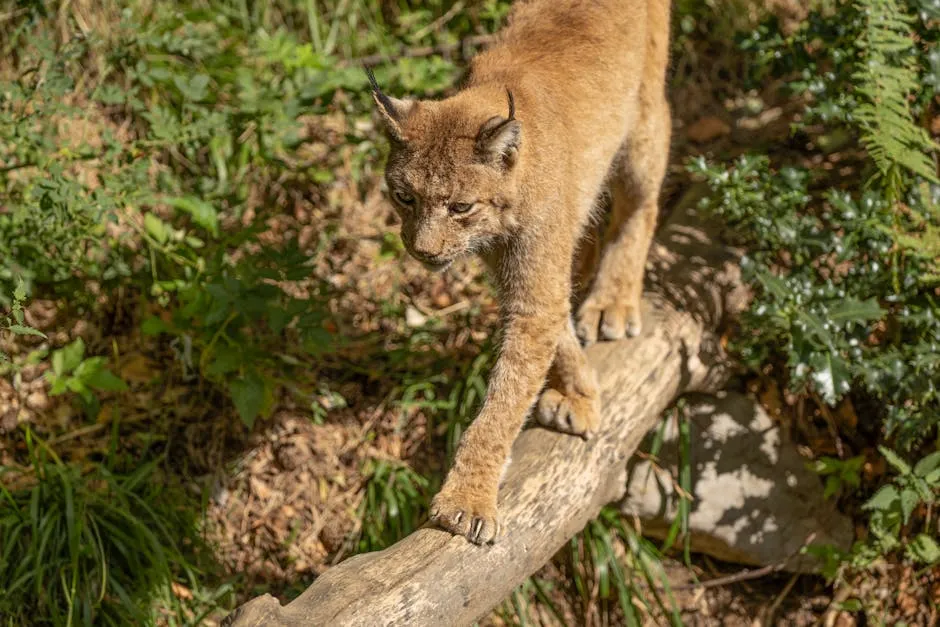
Hunger and Soliciting Attention
When your cat’s purr shifts gears, it’s like a feline remix! Cats often change their purring style when they’re hungry or craving attention, combining it with a high-pitched meow. This unique “meow-purr” hybrid sounds almost like a kitten’s cry, designed to tug at your heartstrings and prompt action. It’s as if they’ve mastered the art of persuasion, using their vocal talents to ensure you hop to it—dinner is served!
Research has shown that cats can manipulate their purring to get a specific response from humans. A study found that a hungry cat’s purr sounds more urgent and less pleasant, almost like a built-in alarm. This subtle tweak can trigger a nurturing instinct in their owners, akin to a baby’s cry. Just picture it: your cat, standing by the food bowl, looking cute yet slightly desperate, purring with a hint of urgency. If that doesn’t tug at your heart, I don’t know what will!
So, next time your kitty is purring up a storm while you’re preparing dinner, remember—it’s not just a sign of affection; it’s a clever communication strategy. Cats are as savvy as they are adorable, using their purrs to enhance their chances of getting exactly what they want.
And speaking of cleverness, consider an Interactive Laser Cat Toy to keep your cat entertained while you’re busy. It’ll have them purring and playing in no time!
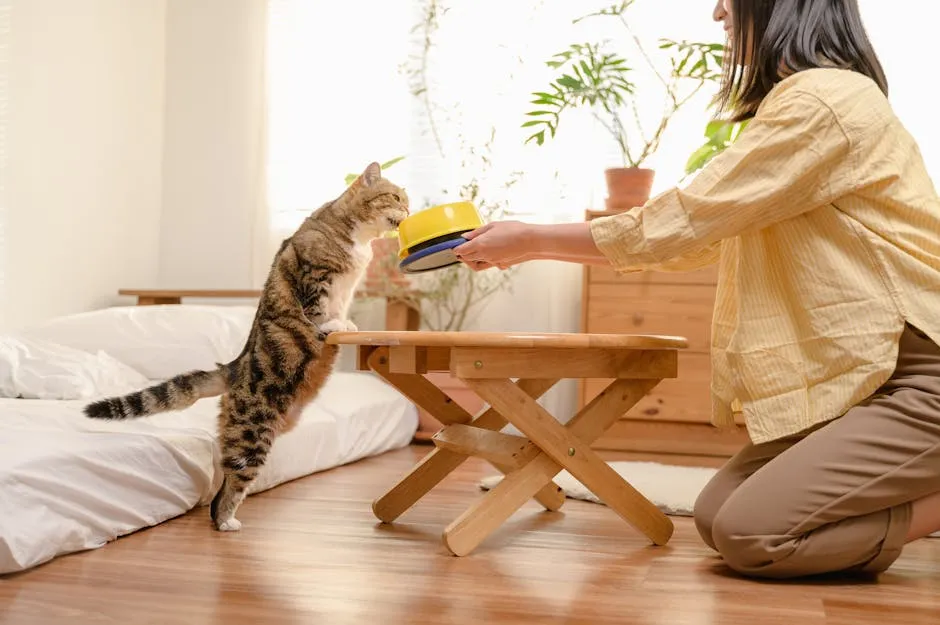
Stress Relief and Healing
Purring isn’t just a charming sound; it’s also a cat’s way of finding peace in chaos. Many cats purr during stressful moments, such as vet visits or after a rough tumble. This behavior acts as a self-soothing mechanism, helping them cope with discomfort or anxiety. Picture your cat, wide-eyed and tense, purring quietly to calm their nerves. It’s like their own little stress ball, but furrier!
Research supports this soothing trait. Studies have indicated that purring promotes healing and pain relief. The low-frequency vibrations from a cat’s purr—ranging between 25 and 150 Hz—are believed to stimulate bone growth and tissue repair. Think of it as nature’s built-in therapist! When cats purr, they harness these healing frequencies, encouraging their bodies to mend. It’s no wonder they seem to bounce back from injuries with astonishing speed.
Moreover, this purring phenomenon isn’t just beneficial for cats; it also has a calming effect on humans. The vibrations can reduce stress levels and create a serene atmosphere. So, when your furry friend curls up next to you, purring softly, consider it a two-for-one deal: your cat finds comfort, and you get to enjoy a little relaxation too!
And if you want to enhance that sense of calm, a Cat Grooming Glove is a perfect way to bond with your kitty while keeping their coat sleek and shiny!
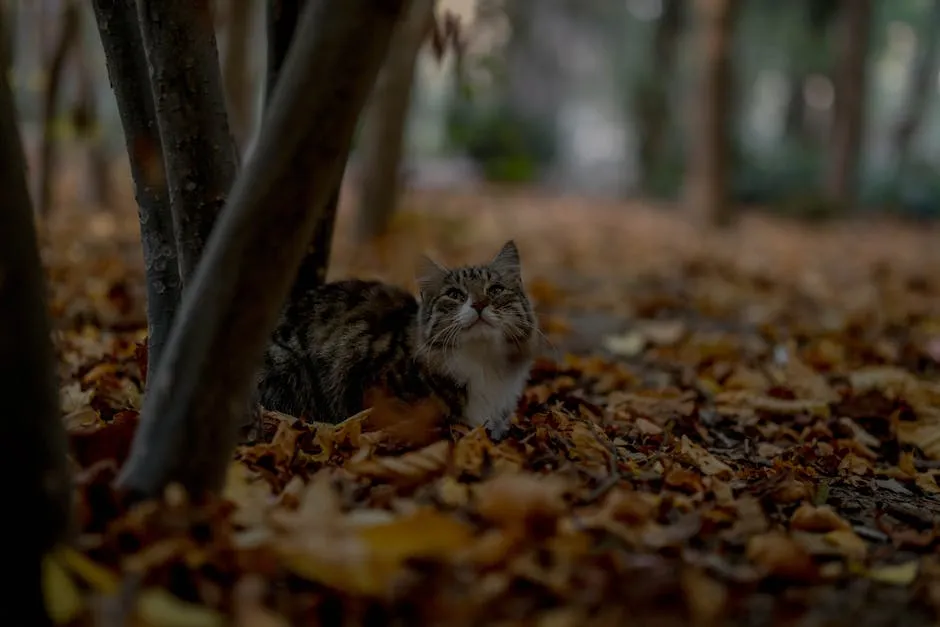
The Context Matters
Ah, the age-old adage: context is everything! Purring can mean various things, but understanding your cat’s body language is crucial. Not all purring signals contentment; sometimes, it’s a cry for help. For instance, if your cat is purring while its ears are pinned back, or it’s hiding under the couch, something might be amiss. This isn’t the time for a cuddle; it’s time for a check-in!
Consider the scenario of a cat at the vet. Purring might not mean they’re happy; rather, it could indicate stress or fear. Similarly, if your kitty is purring while pacing or acting restless, it may be trying to cope with nervous energy rather than expressing joy.
On the flip side, a relaxed cat with half-closed eyes, a gentle purr, and a wiggly tail is likely in a state of bliss. The key takeaway? Observing not just the purr but the complete picture—the body language and setting—will give you insight into your cat’s emotional state.
Recognizing these signs can help you respond appropriately, ensuring your feline friend feels safe, understood, and loved. So, the next time your cat starts purring, take a moment to assess the context. A little observation goes a long way in deciphering the secret language of your purring pal!
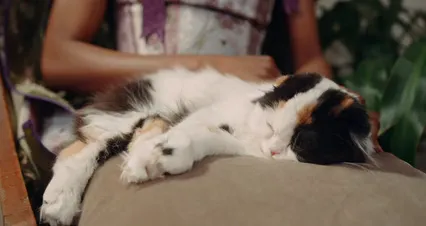
Different Types of Purrs
Cats have a fascinating vocal range, and purring is no exception. They use various purring patterns to communicate different feelings and needs. Let’s break down a few common types of purrs and what they might indicate.
Happy-Purr: The classic happy-purr is music to any cat lover’s ears. Picture a cat curled up in a sunbeam, eyes half-closed, purring away. This sound signals contentment and relaxation. Many cat owners can relate. For example, Sarah, a proud cat mom, shares how her kitty, Mr. Whiskers, purrs like a motorboat during their cozy evening snuggles, indicating pure bliss.
Solicitation Purr: Ever noticed how your cat’s purr changes when it’s mealtime? This is the “meow-purr” hybrid, combining a purr with an urgent meow. It’s almost like they’re saying, “Hey, human! Hurry up with that food!” Research shows that this type of purr is designed to elicit a response from their humans. Just ask Tom, who swears his cat, Luna, has mastered the art of persuasion—especially when dinner is on the line!
Self-Soothing Purr: Cats also purr when they’re feeling stressed or in pain. This self-soothing mechanism helps them cope during tough times. For instance, when Bella, a rescue cat, had to visit the vet, she was visibly anxious, but she kept purring softly. Her owner, Jim, realized it was Bella’s way of calming herself amid the chaos. This purr can sometimes be mistaken for happiness, but it’s essential to look for other signs, like tense body language.
Healing Purr: Some studies suggest that purring may have healing properties. The frequency of a cat’s purr can promote bone and tissue repair. This means that when your cat is purring, it could be doing some internal healing. For example, after a minor injury, Molly the cat often curls up and starts purring. Her owner, Lisa, believes it helps her recover faster, and who wouldn’t want a furry little healer around?
Understanding these purring patterns can significantly enhance your connection with your feline friend. By observing the context and accompanying body language, you can better interpret what your cat is trying to communicate. So, the next time you hear that delightful rumble, take a moment to consider what it might really mean!

Conclusion
In summary, cat purring is a multifaceted behavior that goes beyond simple happiness. While many of us initially associate purring with contentment, it’s essential to recognize that cats purr for numerous reasons, each reflecting their emotional state or needs.
We’ve discussed how purring can signify everything from happiness and affection to hunger and stress relief. Cats are complex creatures, and their purring serves various functions, including communication, self-soothing, and even healing. The mechanics behind purring involve intricate movements of their laryngeal muscles, which create vibrations that can promote health benefits for both cats and humans.
Understanding the evolutionary significance of purring further enriches our appreciation for these enchanting animals. From their early days as kittens to their adult lives, purring has been integral in nurturing the bond between mother and kitten. As our feline companions grow, they continue to use this vocalization to communicate their needs to us, their humans.
Encouraging readers to observe their cats more closely can deepen the bond between them. Pay attention to the context of the purring and the accompanying body language. A relaxed cat with a gentle purr may be enjoying your company, while a tense cat purring in a stressful situation may need your support.
By honing your observational skills, you can become more attuned to your cat’s emotions, fostering a deeper connection and improving your care practices. So, the next time your furry friend curls up next to you, take a moment to listen. You might just discover a world of communication hidden in those soothing vibrations!
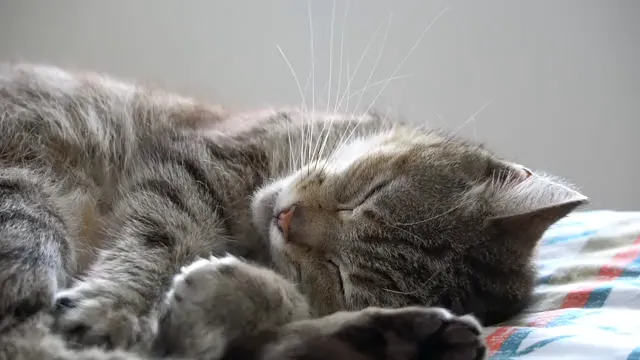
FAQs
Is purring always a sign of happiness?
Not really! While we often think purring means a cat is happy, it can signal many emotions. Cats might purr when they’re content, but they also use this sound when stressed or in pain. Picture this: your cat purring while its ears are flat. That’s a red flag! Always consider the situation and other body language cues to decipher what your feline friend is feeling.
Can purring help humans?
Oh, absolutely! A cat’s purr can be incredibly calming. Many people find the sound soothing, which can lower stress levels. Some studies even suggest that the frequencies of a cat’s purr—between 25 and 150 Hz—may have healing properties for humans. Imagine curling up with your cat after a long day, and let the magic of their purr wash your worries away. It’s like a furry therapy session!
Why does my cat purr when I’m not around?
Cats are curious creatures! When they purr alone, it’s often a self-soothing mechanism. Think of it as their way of comforting themselves when they feel anxious or lonely. Just because you can’t hear the purr doesn’t mean they aren’t enjoying it! Whether they’re snuggling up in a sunbeam or just chilling, purring helps them feel safe and secure.
Do all cats purr?
Most domestic cats do, but not all big cats can. For instance, lions and tigers can’t purr like house cats. It’s all about their anatomy; the hyoid bone structure in big cats doesn’t allow for the same vibrations. However, some big cats, like cheetahs, can purr. It’s a fascinating mix of nature that reminds us how unique each species truly is!
How do I help a stressed cat?
Creating a calming environment is key! Start by providing a safe space, like a quiet room with cozy blankets. Keep the noise levels low and avoid sudden movements. Also, observe your cat’s body language for signs of stress. If they’re hiding or have dilated pupils, take a step back. Engage in gentle playtime or simply let them relax. Your patience and understanding can make a world of difference for your furry friend!
And don’t forget to keep your cat’s teeth in check! A good set of Cat Dental Chews can help keep those pearly whites shining!
Please let us know what you think about our content by leaving a comment down below!
Thank you for reading till here 🙂
All images from Pexels




